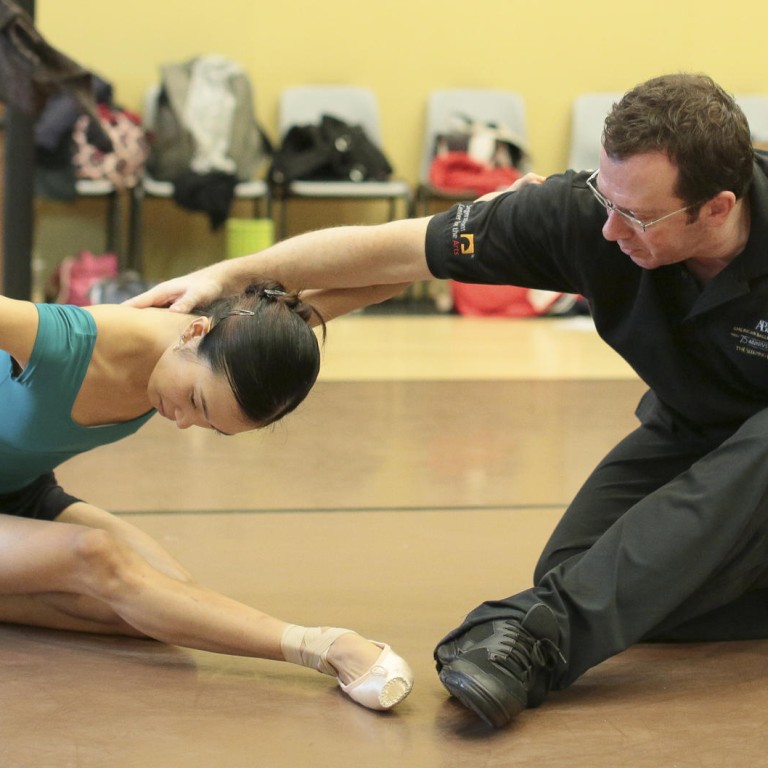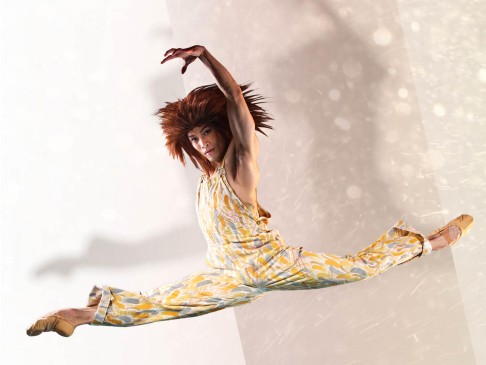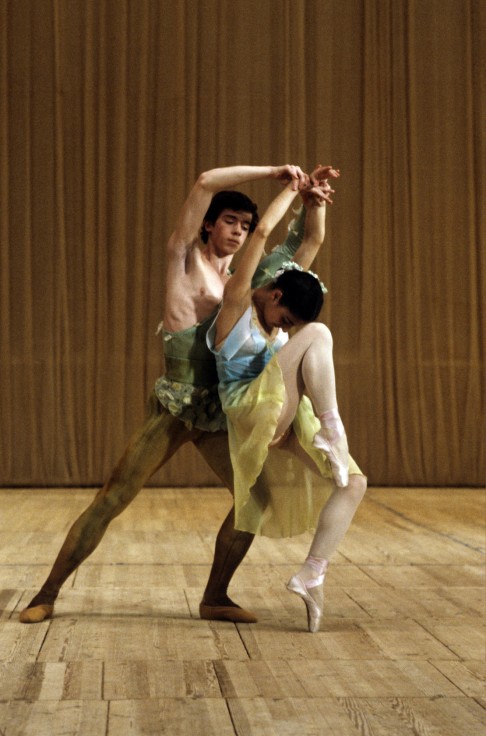
In Hong Kong: 'Russia's best' classical ballet master Alexei Ratmansky
Artist seen as the standard-bearer for classical ballet choreographs Carnival of the Animals for Hong Kong Ballet and, unusually, leads their rehearsals
Alexei Ratmansky bounds across a studio in Kwai Tsing imitating a jellyfish. Not movements you normally associate with a choreographer of his stature. But Ratmansky, who is in town to stage his (Carnival of the Animals) for Hong Kong Ballet, is no ordinary artist.
"Your arms should be like this," says Ratmansky, as ballerinas and apprentice jellyfish Zhang Siyuan and Gao Ge follow him intently.
The aquarium sequence also involves a shoal of hungry fish darting around the stage. The steps are intricate and it takes repeated attempts for the dancers to coordinate themselves properly. Ratmansky is endlessly patient, demonstrating the moves with extraordinary expressiveness and an energy that belies his 45 years.

Talking after the rehearsal, the choreographer is soft-spoken, articulate and refreshingly unassuming.
, set to Camille Saint-Saens' musical suite of the same name, was created for the San Francisco Ballet in 2003. It owes its continued success, says Ratmansky, "to the music - it's brilliant and everybody knows it". The light-hearted piece is a contrast to the darker works on the Hong Kong Ballet's upcoming programme, for the shows which run from May 29 to 31.
It's a real coup for Hong Kong Ballet that Ratmansky has made time in his busy schedule for the company. Usually an assistant teaches the steps and the choreographer fine-tunes before the opening. Ratmansky was only available in March. "So I'm doing the assistant's job," he says with a smile. He had never seen the dancers perform and is impressed: "They can do everything I ask of them." It's a big compliment coming from one of the world's most sought-after choreographers.

Born in what was then Leningrad, Ratmansky trained at the Bolshoi Ballet School in Moscow. In 1986 he joined the Ukrainian National Ballet and in 1992 took advantage of the open policy of perestroika to dance overseas. First he went to Canada to dance with the Royal Winnipeg Ballet, then he spent 10 years in Denmark with the renowned Royal Danish Ballet.
His breadth of experience as a dancer has enriched his choreography, which is influenced by the Russian, Danish and American schools. His exceptional talent has shown since 1998's , which he created for Nina Ananiashvili and earned him the prestigious Golden Mask Award in Russia.
Mikhail Baryshnikov said of him: "Russia has never had anyone better."

Regarded as the standard-bearer for true classical ballet, Ratmansky says, "I always wanted to go further, but after trying, I realised I don't really have that. So I do what I know best".
As the Bolshoi Ballet's artistic director from 2004 to 2008, Ratmansky won international acclaim for revitalising the repertoire and bringing on dazzling new dancers including Ivan Vasiliev and Natalia Osipova. On the home front, however, it was a different story. After four years of struggling with the Bolshoi's notorious internal politics, he left for New York in 2009 to join the American Ballet Theatre, where he is now artist in residence.
Ratmansky choreographs for other companies around the world. Major works include (2006) and (2008) for the New York City Ballet; for the Royal Ballet (his first for a British dance company) in London in 2013; and for the Australian Ballet in 2014. Last year, his (2011) was performed by the Bolshoi Ballet at the Paris Opera.

The Hong Kong Ballet are rehearsing with Ratmansky in Kwai Tsing because the company's space at the Cultural Centre is being used by the Bolshoi for the Arts Festival. Ratmansky was able to watch his old company perform his 2008 for the first time since he left the Bolshoi.
While proud to see dancers he nurtured leading the company and praising some "fantastic" performances, he is concerned about a few changes that have crept in. "My ballets are quite fragile, there are many little, complex things, details … If they are not there, it can look quite messy."
If a living choreographer's work is that fragile, how authentic are contemporary versions of older ballets? This question led Ratmansky to his latest project - a production of for American Ballet Theatre, taken from the notation of the original choreography. He stripped away more than a century of additions and distortions to present Marius Petipa's 1899 masterpiece as closely as possible to the way it was created.

This was a Herculean labour - but a labour of love. "I don't think I've ever been as happy as I was doing this," Ratmansky says. He set out to discover "the real Petipa", and what he found left him awestruck. "My taste has changed. I can't watch the classics any more because I see that it's all lies … It's so far from what Petipa intended."
A huge success with public and critics alike, the production, which had its world premiere in March at the Segerstrom Centre for the Arts in Costa Mesa, California, has been showered with praise for its return to a purer, more refined way of dancing.
The work will be staged at The Metropolitan Opera on Broadway from May 29 to June 13 as part of the American Ballet Theatre's 75th anniversary season.

"We spent hours and hours, correcting, correcting, correcting … " says Ratmansky, but the notation is so precise that as long as the dancers do what's written, "the style is there … the steps are the style."
Today's dancers are more athletic than in Petipa's day - is it hard for them to resist showing that off? "Athleticism is easier for the audience to appreciate," Ratmansky acknowledges. "Of course, when dancers hear the thunder of applause, they get excited, that's what they want."
However, that doesn't make extreme moves such as the "six o'clock extension" appropriate in a classical context. "It's just common sense. You can check it in the mirror - if you raise your leg that high, we can all see your underwear. If you're playing Giselle or Aurora that's not what they would do."
Hong Kong Ballet takes on Ravel's Bolero

